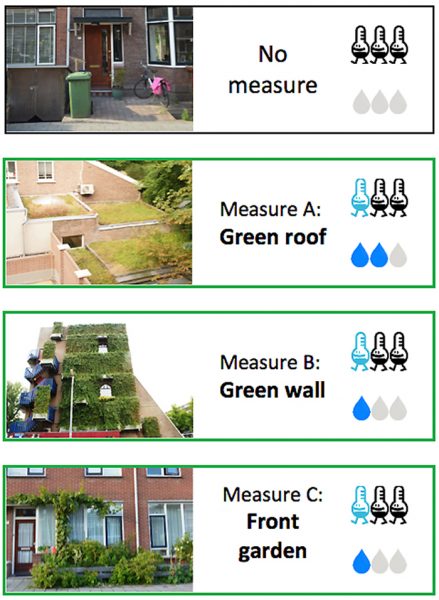“Sponge’ is the theme again of this weeks round up. Sponge, as a concept, is a key concern for the city of Rotterdam. The term is more widely used in China, where the ‘Sponge’ city concepts is explored in an interesting post. Then we take the focus to green roofs – why aren’t there more? Perhaps this is because of a plea registered last week by a well known Germany green roof expert working in the USA: Why is there a a constant clamour for more research when so many metres have already been installed? Lets get the sponges in and stop pondering whether we need academic permission.
Rotterdam and what people want from Green Infrastructure

Rotterdam needs to adapt to climate change and address the cities significant concerns with flooding. Green infrastructure is an important element in helping city deliver this. But what do citizens want from the implementation of a city wide green infrastructure approach? This interesting study set out to help designers and policy makers address the concerns of the citizen and concludes:
- There is no one-size-fits-all solution for using green infrastructure to mitigate the impacts of climate change in cities
- Municipalities would benefit from a green space strategy that assesses needs, creates designs, and evaluates outcomes on a neighbourhood level
- Where green space is sparse, a first priority may be to provide greenery designed for recreational purposes
- Where green space is already in place, new greenery can have a more natural character
Usability was a key factor for most responders to the study. And the review is worth a peruse and the results are surely relevant in other cities in the world.
Sponge City Programme – China
‘Sponge city’ highlights why green infrastructure is important in China. According to the article, China is
- promoting ecological civilization,
- recognises the importance of both green infrastructure and the river-basin-wide approach.
- there is a national “Sponge City” program under way that requires cities to develop sponge city master plans
The idea is that a whole city absorbs, harvests, stores, filters, purifies and slowly releases rainwater into rivers and the ground. Just like a sponge. Again, this is a concept and approach that is being developed across the globe though it maybe be referred by other terms.
An economic model to green up existing roofs on a massive scale – a call from Greece
How can a city get existing green roofs greened?. It is all very well, in cities that have policies and incentives, to have green roofs on new developments. But what about the existing ones? An interesting idea comes from Greece in this post in the Nature of Cities.
Is it the consumer rather than the authorities that could make the difference? The article suggests that if each citizen in a housing block were to fund/install one square metre of green roof, whole scale greening might just happen..The average roof space in Athens is 150m2 with 40 residents living in the the residency. This method would created 40m2. The total number of residents of Athens is five million. So that would be five million square metres of green space. In other words it would create a green area bigger than Central Park in New York.

This is a bold idea and is in keeping with he European Federation’s aspiration for every urban citizen in the EU to have 5 square metres of green roof by 2030. This could potentially be a mechanism to pay for it. And as with most mechanisms, the more green roofs installed the lower the cost. Therefore as the cost decreases, citizens fund more green roofs.
A Plea from A German in the USA
The final word goes to an old friend of LIvingroofs.org – Jorg Breunig about how the so-called need for research is slowing implementation in North America. Sadly this is the case in many other countries. There is still a belief that green roofs are not a proven technology. We have experience of this attitude way back in the early 2000s, as this was the response from ‘experts’ in the UK. When we cited German and Swiss research we were told (and you might not believe this) that
- the rain is different in Germany
- fire is different in Germany
We understand there is, sometimes, a need for some refinement but, as Jorg says, lets get installing not pondering the metrics.